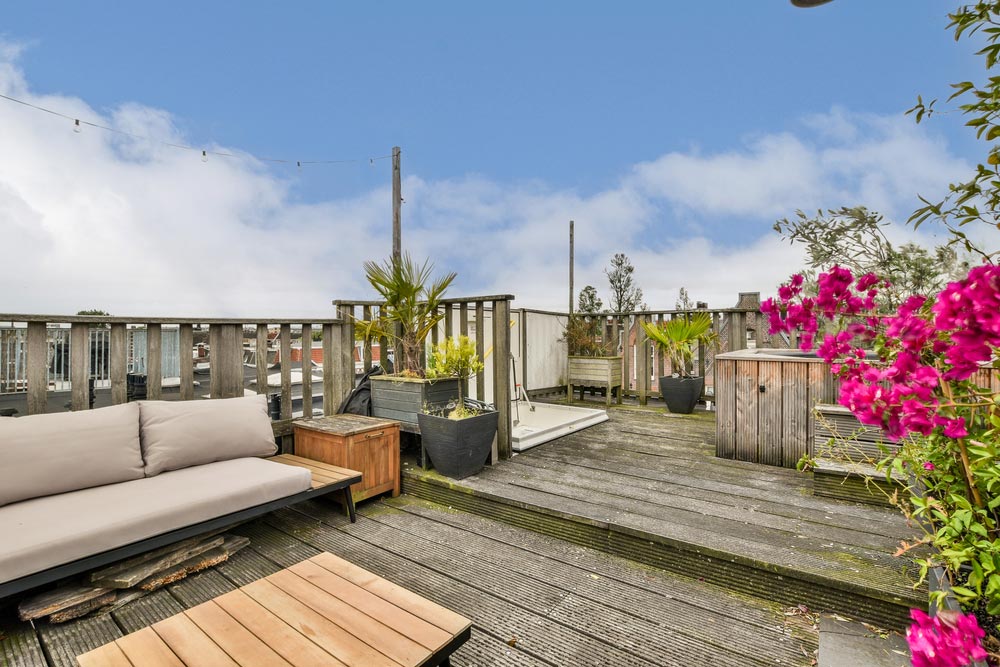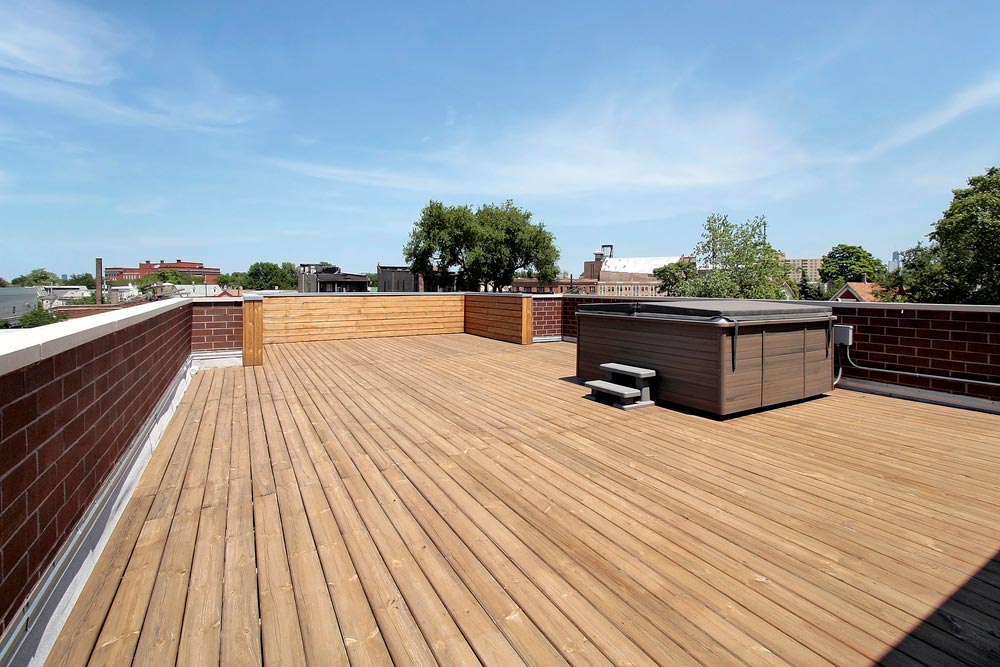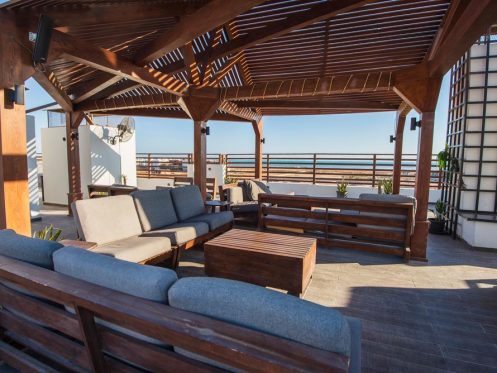A walkout deck over living space is not a regular deck, porch or patio. This type of deck must be treated as its own breed of deck. We must first create a water-tight seal and a proper roof to prevent water intrusion into the living space before a deck can be built above it.
Modern HVAC systems further add to the difficulty of the process by creating a negative pressure environment in the home. This effectively draws water into the home from the outside space due to that negative pressure or vacuum. We also have to deal with wind-driven rain being an obvious source of water intrusion.
Compound these difficulties by the fact that a deck needs to be a flat surface for walking and therefore has no pitch. This surface is flat providing little to no grade to force water away from the home. These very specific issues make this process extremely tricky and not a project for a novice and certainly not a DIY Project.

A contractor that is going to tackle a job such as this, in which a walkout deck is going to be placed over conditioned living space, has got to take into account all the variables, and ensure that all flashing are perfect. If any cracks or separations are left present, water will find its way into that opening. The contractor needs to be well-versed in the art of waterproofing, flashing and cladding of exterior structures. Both residential and commercial projects will require commercial building products.The commercial products being used on a residential application will oftentimes be welded either with actual flames from a torch or a hot air welder is used and special precautions must be observed to ensure no damage is done to the structure, or fires started. A typical residential roofing person, no matter how well trained, would not necessarily have the skills and experience needed to install the systems used on flat roofing structures. All fasteners, all flashings, openings into masonry, and into the envelope- of the structural foundation of the project must be isolated to ensure water-tight closure, and the finished product must have no penetrations through the monolithic waterproofing membrane or else the system will fail. This is not a system that amateurs can properly execute. This is a process that we see done improperly daily by so-called “experts” that have years of experience in either construction, decking, or even the roofing trades and still failed to execute this properly. Extensive wood rot and structural damage can be incurred to the home structure due to the slow insipidus nature of these. Oftentimes, it takes years for the manifestation of poorly installed systems. Eventually the wood rot becomes significant enough that the homeowner sees the evidence or signs. That’s why it’s so important to make sure the contractor that you hire knows exactly what they’re doing in these situations because you may not know that they failed to properly waterproof and secure your structure for several years after completion.
Some of the commonly used systems that we see fail on walkout patios and decks are as follows: The most common mistake that we see made on a walkout patio deck is the belief that tile is a waterproofing system. Weekly, I’m called to inspect tile that is breaking on a walkout deck and water stains inside the home. Typically these systems were installed between two and five years prior to us being called. Through the years water has slowly been seeping through the tile backer board, masonry and into the wood decking. Then, into the rafters and just slowly rotting the system from the top down. By the time the tiles start cracking or the water appears inside, typically wood has already rotted, and structural damage exists. At this point, the entire thing has to be rebuilt. I cannot encourage enough, that people follow up quickly and make the call immediately when they see these signs of problem start because the issue will not go away. It is only going to get worse and repairing structural damage is far more expensive than just replacing the roof deck or decking materials.

Another system we commonly see attempted and fail is modified-bitumen with wood attached using an adhesive. This system can work if properly executed by an experienced Commercial Roofer given the correct conditions. The first problem with this system is that modified-bitumen (Mod-Bit) is not intended to be installed over a true flat surface. The manufacturer recommends and requires for warranty a specific grade. The next major issue with this system is self adhered or “Peel & Stick”. This is a Mod-Bit material installed without the use of torches. A peel and stick is not a true monolithic membrane. Finally, the adhesion of the deck to the Mod-Bit, even under the best of conditions and (using the very best commercial grade adhesive) is difficult. This process must be done just right or full adhesion will not occur. Additionally, we see fasteners run through the membrane in an attempt to secure when adhesion fails. Now we have penetrations where none should be.
Here at Bayfront Roofing And Construction we are trained and licensed for residential as well as commercial roofing and waterproofing. We have been through countless hours of training and we specialize in exactly this process. We do this on large government projects, on the National Seashore, on large condominiums with dozens of walkout patios and we do this for small residential patios. The process that we’ve developed works rather the project is large or small and it looks good every time. We can discuss final finish and design whether you want your walkout patio to be tile, a composite decking system or some other paver system. The finished product can be nearly anything that you want to be as long as we properly prepare the surface and waterproofing first. Our preferred method and the one that most of our customers choose, because of the balance of beauty, longevity and cost is definitely a composite decking system over a single ply membrane such as 60 mm TPO. We weld the entire system and waterproof it making it monolithic. Then, our entire decking system is welded to that monolithic membrane with ZERO penetrations. The system we’ve developed meets or exceeds all local building codes and windstorm requirements. We have installed large observation decks and received a WPI-8 storm certificate on the national seashore for government building using this exact method. We’ve also done this method for tiny 30 ft.² walkout balconies. Another component to pay attention to is the railing system. No matter the system we design here in Bayfront, the railing system has to be discussed and designed at the very beginning to ensure that we’re not going to be penetrating our waterproofing envelope during the install of the railing system itself.
Waterproofing and system design is a passion of ours here at Bayfront Roofing and Construction. Please give us a call and ask to speak with me, Scott Ricks, the owner. Even if I can not help, I’m happy to discuss and bounce ideas back and forth. Don’t let this problem continue, it will only get more expensive as time goes on.
